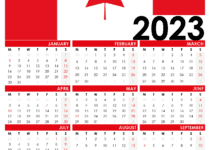How many days in a year
Days in a year?
It’s a simple question, but the answer is not as straightforward as you might think. While it’s true that the standard calendar year has 365 days, there are some exceptions and variations that can impact the number of days in a given year. In this article, we’ll explore the concept of a “year” and the different ways in which it can be measured.
First, let’s start with the most basic definition of a year: the time it takes for the Earth to complete one full orbit around the sun. This is known as a “tropical year” and it is approximately 365.2422 days long. However, since the standard calendar year has only 365 days, this means that there is a discrepancy of about 0.2422 days per year. To account for this difference, we add an extra day to the calendar every four years in what is known as a “leap year.”
Leap years have 366 days instead of the usual 365, and they occur every four years. However, there are some exceptions to this rule. For example, years that are divisible by 100 but not by 400 are not leap years. This means that the year 1900 was not a leap year, but the year 2000 was. This adjustment ensures that the calendar year remains in sync with the tropical year as closely as possible.
So, if we add up the number of days in a standard calendar year (365) and a leap year (366), we get an average of 365.25 days per year. However, this is still not exactly the same as the tropical year, which is about 11 minutes and 14 seconds longer than 365.25 days. Over time, these discrepancies can add up and cause the calendar to become misaligned with the seasons.
To address this issue, the Gregorian calendar was introduced in 1582. This calendar has a more precise leap year rule that skips leap years in years that are divisible by 100, but not by 400. This adjustment makes the calendar more accurate than the Julian calendar that preceded it, which added a leap year every four years without exception.
So, how many days are in a year according to the Gregorian calendar? The answer is 365 days in a standard year and 366 days in a leap year, which occurs every four years (with the exception of years that are divisible by 100 but not by 400). This means that the average length of a year in the Gregorian calendar is 365.2425 days.
It’s worth noting that there are other ways to measure a year, depending on the context. For example, a “sidereal year” is the time it takes for the Earth to complete one full orbit around the sun relative to the fixed stars. This type of year is slightly shorter than a tropical year, at about 365.2564 days. There is also the “anomalistic year,” which is the time it takes for the Earth to complete one full orbit around the sun relative to its closest approach to the sun. This type of year is slightly longer than a tropical year, at about 365.2596 days.
In conclusion, the answer to the question “how many days in a year?” depends on the context and the calendar being used. The standard Gregorian calendar has 365 days in a standard year and 366 days in a leap year, occurring every four years (with some exceptions). However, the length of a year can vary depending on the type of year being measured and the precision of the measurement. Regardless of the specific definition, the concept of a year remains a fundamental unit of time that helps us understand the passage of time and the cyclical nature of the universe.
The number of days in a year may differ from year to year. Find out in our article if it is a leap year or a year in 365 days.
Do you know exactly how many days there are in a year? Put an end to any doubts you may have and discover the history of those days.
There are four seasons in a year. We have spring, summer, fall and winter. But do you know exactly how many days per year? These may be better days than others, but none are forgotten in our calendars. Do you also know how many terms there are in a year? This is a question that may be of interest.

Number of days in a year
The number of days in the year is sometimes the subject of discussion by those who are less well understood. Don’t worry, it’s not very difficult to understand…
In fact, the confusion is generated by the existence of a given year, called a leap year. This year is considered a leap year, with one day more than other years. But then, how many days is a year exactly?
A year generally has 365 days, established according to the Gregorian calendar, adopted in 1582 by Pope Gregory VIII. According to this calendar, there are 365 days in a year and every four years another day is added to the month of February. Then comes the leap year.
This happens because the Earth’s rotation around the Sun takes about 365 days, 5 hours, 48 minutes, and 48 seconds, or about 365.24219 days.
In order not to waste time, this fraction was approached for six hours, which ends up being compensated by leap years. Because 6 hours every 4 years is 24 hours, which is 366 days.
The leap year completes a difference and correctly adjusts the number according to the Earth’s rotation. If the 365 days were kept as a fixed calendar, it would have an immediate effect on the months gradually changing from summer to winter.
Some future leap years, can be known from the attached list: 2020, 2024, 2028, 2032, 2036, 2040, etc.
[sc_fs_multi_faq headline-0=”h3″ question-0=”How many days are in a year?” answer-0=”The Gregorian calendar has 365 days in a standard year and 366 days in a leap year, which occurs every four years (with some exceptions).” image-0=”” headline-1=”h3″ question-1=”What is a leap year?” answer-1=”A leap year is a year that has an extra day, with 366 days instead of the usual 365. Leap years occur every four years with exceptions for years that are divisible by 100 but not by 400.” image-1=”” headline-2=”h3″ question-2=”What is the difference between a tropical year and a Gregorian year?” answer-2=”A tropical year is the time it takes for the Earth to complete one full orbit around the sun and is approximately 365.2422 days long. The Gregorian year has 365 days in a standard year and 366 days in a leap year and has an average length of 365.2425 days.” image-2=”” headline-3=”h3″ question-3=”What is the difference between a sidereal year and an anomalistic year?” answer-3=”A sidereal year is the time it takes for the Earth to complete one full orbit around the sun relative to the fixed stars and is approximately 365.2564 days long. An anomalistic year is the time it takes for the Earth to complete one full orbit around the sun relative to its closest approach to the sun and is slightly longer, at about 365.2596 days.” image-3=”” count=”4″ html=”true” css_class=””]


